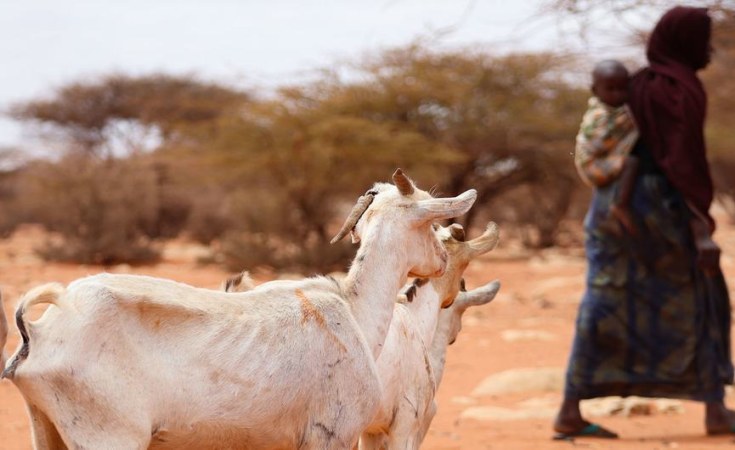The new fund is a step towards climate justice. But its host and size leave many questions unanswered.
In my country, Kenya, climate change poses a daily struggle despite our minimal contribution to global greenhouse gas emissions. Severe challenges include heatwaves, erratic rainfall, and frequent floods, impacting both lives and the economy.
Annually, climate change cuts nearly 5% from our GDP, particularly affecting agriculture and water resources, which make up a third of our economy. By 2050, this loss is expected to triple. Small-scale, rain-dependent farms, predominant in over 80% of arid and semi-arid lands, face devastation, exacerbated by poor infrastructure. This narrative extends beyond Kenya, highlighting a common thread across Africa and the developing world.
The solution lies in wealthy, high-emission nations assisting less affluent nations. Developing countries must enforce strict regulations, invest in renewables, and actively engage in global climate agreements to fulfil their responsibilities. Neglecting this duty not only harms the environment but also impedes global sustainability efforts, particularly in Africa.
Promisingly, a new dawn for climate justice may have finally arisen at the COP28 in Dubai late last year. Day One of the climate summit saw they announcement of the landmark decision to approve a Loss and Damage Fund through which wealthy states will compensate poor states for the irreversible harms of climate change. Succinctly put by the conference's president, Sultan Al Jaber, history was delivered. Initial commitments totalled $700 million.
This fund is a crucial development for Kenya, a nation grappling with the ravages of climate change. However, I stand cautiously optimistic at a new financial mechanism as its details begin to be worked out.
Firstly, the choice of the World Bank as the interim fund raises concerns about the potential exclusion of countries like mine. The World Bank's classification of Kenya as a lower-middle-income country will potentially make it harder for our government to access a fund designed to assist the most vulnerable countries. This classification disregards the unique vulnerabilities and sector-specific impacts, particularly on agriculture and water resources, that Kenyan communities face.
A nuanced approach is needed to ensure that funds are allocated based on climate vulnerability and impact rather than purely on income classifications, which may not fully capture the realities of climate adversity. On-the-ground reporting and intricate models that predict which countries are the most vulnerable to the impacts of climate change in coming years will be important.
Secondly, our historic experiences with the World Bank have often led to greater dependence, rather than building resilience. The conditions attached to loans, such as austerity measures, undermined the very objectives of finance by restricting fiscal space. Most climate finance is also in the form of loans. It is essential that policymakers shaping the Loss and Damage learn the lessons of this past and ensure a different approach is taken today. Reparations via the fund must empower countries to enhance their adaptive capacity without the burden of additional debt. This means prioritising grants over loans and ensuring that funds are not just a continuation of the debt-creating financial assistance that has long challenged the developing world.
Finally, it is alarming that the amount committed by developed nations to the Loss and Damage Fund so far is a drop in the ocean compared to actual climate financing needs. A study from the University of Delaware estimated the unweighted percentage of global GDP lost due to climate impacts like droughts, floods, and wildfires at about 1.8%, or $1.5 trillion. It calculated that low- and middle-income countries experience over $2.1 trillion in produced capital losses due to climate change. As developing countries, we need approximately $400 billion annually to address these losses, which far exceeds the initial $700 million pledges or broader COP28 commitments expected to provide about $100 billion per year by 2030.
It is essential to remember that the Loss and Damage Fund is only a part of the broader climate finance challenge. The fund's success will depend on the continuous commitment of wealthy nations and the effective distribution of resources to the countries most in need. It is an important but small step towards addressing the imbalance where countries least responsible for climate change face its harshest consequences.
Furthermore, while foreign aid is necessary, it cannot be the sole solution to Africa's climate challenges. Sustainable alternatives are emerging across the continent. See Tanzania's adoption of solar power systems and Kenya's significant investment in renewable energy sources. These efforts are crucial for building resilience against climate threats. However, the support from the international community, as seen in the Loss and Damage Fund, is vital for amplifying these efforts and ensuring they can be sustained over the long term.
The establishment of a Loss and Damage Fund at COP28 is about more than just financial assistance; it is a recognition of the disproportionate impact of climate change on vulnerable nations. It is a commitment to climate justice, ensuring that those who have contributed least to the crisis are not left to face its consequences alone. This fund represents not just financial aid but a symbol of global solidarity in the fight against climate change. It is a step forward, but the urgency and scale of the climate crisis demand that this momentum is not only maintained but accelerated.
Kalonzo Musyoka E.G.H. was Vice President of Kenya from 2008 to 2013.


